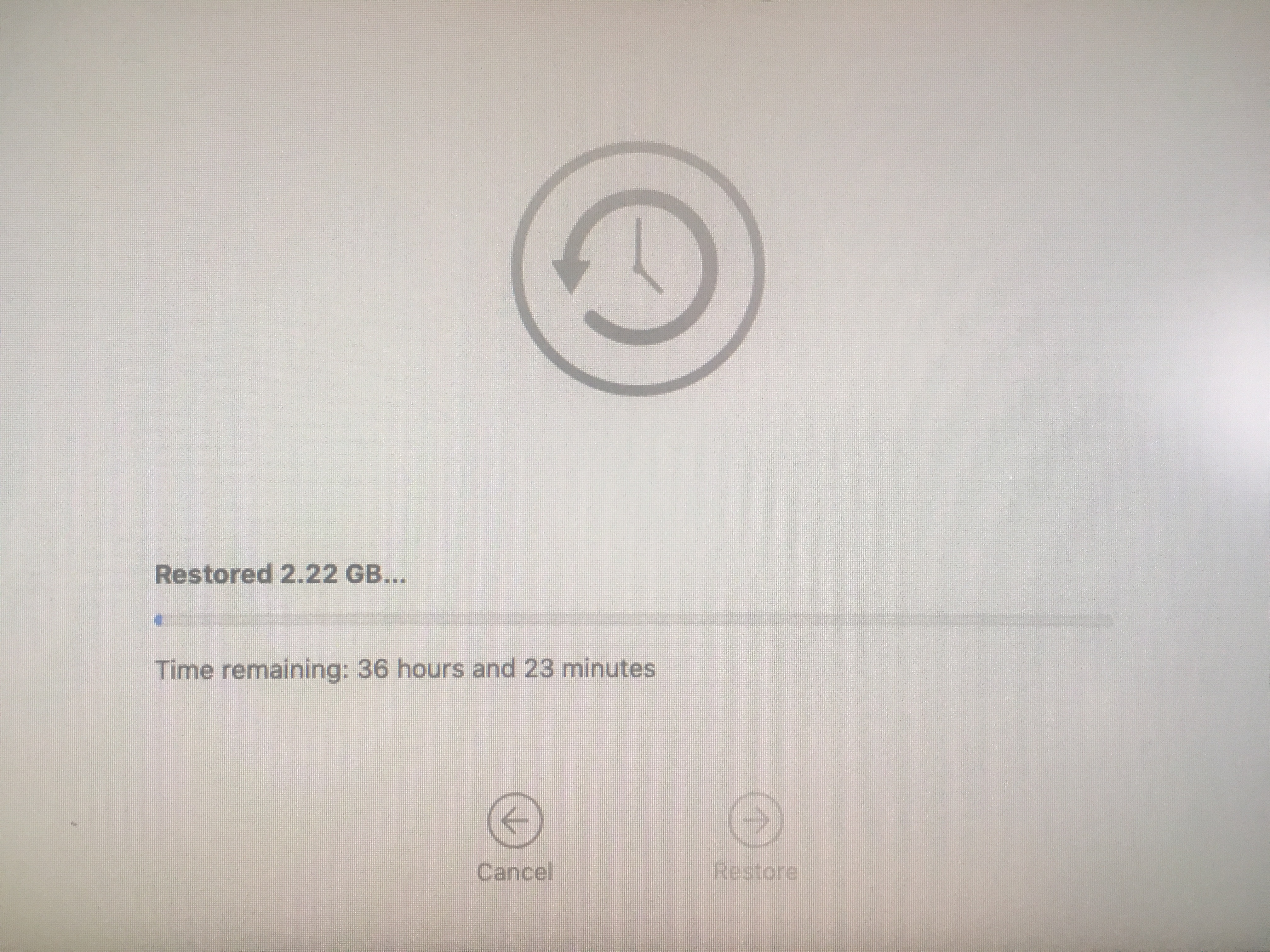|
|
Sponsored Content
Operating Systems
OS X (Apple)
12-Core MacPro (2013) kernel_task over 1200%
Post 303033910 by Neo on Sunday 14th of April 2019 03:07:53 AM
|
|
6 More Discussions You Might Find Interesting
1. UNIX for Dummies Questions & Answers
can it be used?
how to config it?
thanks (4 Replies)
Discussion started by: cloudsmell
4 Replies
2. OS X (Apple)
I installed 10.5 (Leopard) on my G4 733 Mhz (after minor tampering with the install package, just switched a boolean FALSE to TRUE).
Everything works fine after startup, but once I sleep the computer and wake it back up, kernel_task starts using at as much CPU runtime as it can, as in past 90%.... (0 Replies)
Discussion started by: peter.story
0 Replies
3. Solaris
Hi bros,
CPU speed of Sun Sparc Enterprise T5140 in data sheet is 1200 Mhz. Why it shows in "prtdiag -v" command each thread just has speed at 1165 Mhz.
Thank you,
tien86 (4 Replies)
Discussion started by: tien86
4 Replies
4. Hardware
Hey MacPro users.
I just bought a refurbished 13-Core MacPro with 64GB of RAM for a cybersecurity gaming project I'm working on. Could not wait for the new MacPro in 2019, so this will have to do:
2013 Apple Mac Pro 2.7GHz 12 Core/64GB/256GB Flash/Dual AMD FirePro D700 6GB 6,1
Now, I'm... (0 Replies)
Discussion started by: Neo
0 Replies
5. OS X (Apple)
Before Upgrade:
https://www.unix.com/members/1-albums177-picture1220.png
After Upgrade:
https://www.unix.com/members/1-albums177-picture1221.png (0 Replies)
Discussion started by: Neo
0 Replies
6. OS X (Apple)
WARNING!
Just upgraded my MacPro (2013) from Catalina 10.15.2 to 10.15.3.
After the routine download and restart for upgrade installation, the Mac would not boot. Totally crashed.
Now, I'm in the process of a 15 hour restore from my last time machine backup.
I'm not very happy with... (3 Replies)
Discussion started by: Neo
3 Replies
LEARN ABOUT DEBIAN
imgsizer
IMGSIZER(1) IMGSIZER(1) NAME
imgsizer - automatically splice in height and width params for HTML IMG tags SYNOPSIS
imgsizer [-d file] [--document-root file] [-h file] [--help file] [-n] [--no-overwrite] [HTMLFile] [-v file] [--version] OPTIONS
Display version information and exit. Display usage information. Directory where absolute image filenames (i.e, ones which contain a leading "/") may be found. -n, --no-overwwrite, .SH DESCRIPTION The imgsizer script automates away the tedious task of creating and updating the extension HEIGHT and WIDTH parameters in HTML IMG tags. These parameters help many browsers (including the Netscape/Mozilla family) to multi-thread image loading, instead of having to load images in strict sequence in order to have each one's dimensions available so the next can be placed. This generally allows text on the remainder of the page to load much faster. This script will try create such attributes for any IMG tag that lacks them. It will correct existing HEIGHT and WIDTH tags unless either contains a percent (%) sign, in which case the existing dimensions are presumed to be relative and left unaltered. This script may be called with no arguments. In this mode, it filters HTML presented on stdin to HTML (unaltered except for added or cor- rected HEIGHT and WIDTH attributes) on stdout. If called with file arguments, it will attempt to transform each file in place. Each argu- ment file is not actually modified until the script completes a successful conversion pass. The -d <directory> option sets the DocumentRoot, where images with an absolute filename (i.e., ones which contain a leading "/") may be found. If none is specified, the DocumentRoot defaults to the current working directory. The -n (no-overwrite) opion prevents the program from overwriting existing width and height tags if both are present. Additional options may also be specified in the environmental variable "IMGSIZER". For example, to avoid typing "imgsizer -d /var/www/docs" each time imgsizer is invoked, you might tell sh (or one of its descendants): IMGSIZER="-d /var/www/docs"; export IMGSIZER or, if you use csh: setenv IMGSIZER "-d /var/www/docs" This script is written in Python, and thus requires a Python interpreter on the host system. It also requires either the identify(1) utili- ty distributed in the open-source ImageMagick suite of image-display and manipulation tools, or a modern version of file(1) and rdjpg- com(1). These utilities are used to extract sizes from the images; imgsizer itself has no knowledge of graphics formats. The script will handle any image format known to identify(1) including PNG, GIF, JPEG, XBM, XPM, PostScript, BMP, TIFF, and anything else even remotely likely to show up as an inline image. NOTE
The -q, -l, and -m options of the 1.0 versions are gone. What they used to do has been made unnecessary by smarter logic. BUGS
The code uses regular expressions rather than true HTML/XML parsing. Some perverse but legal constructions, like extraneous space within quoted numeric attributes, will be mangled. AUTHOR
Originally created by Eric S. Raymond <esr@thyrsus.com>. Additional code contributed by Erik Rossen, Michael C. Toren <michael@toren.net>, and others. For updates, see <http://www.catb.org/~esr: http://www.catb.org/~esr> SEE ALSO
identify(1), file(1), rdjpgcom(1). IMGSIZER(1)
